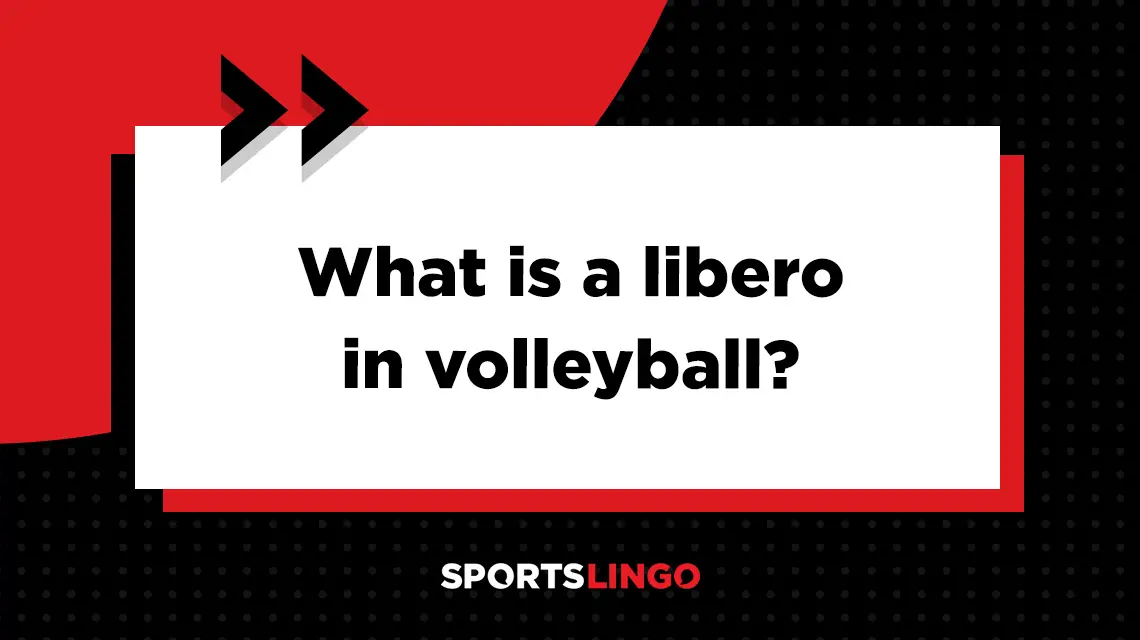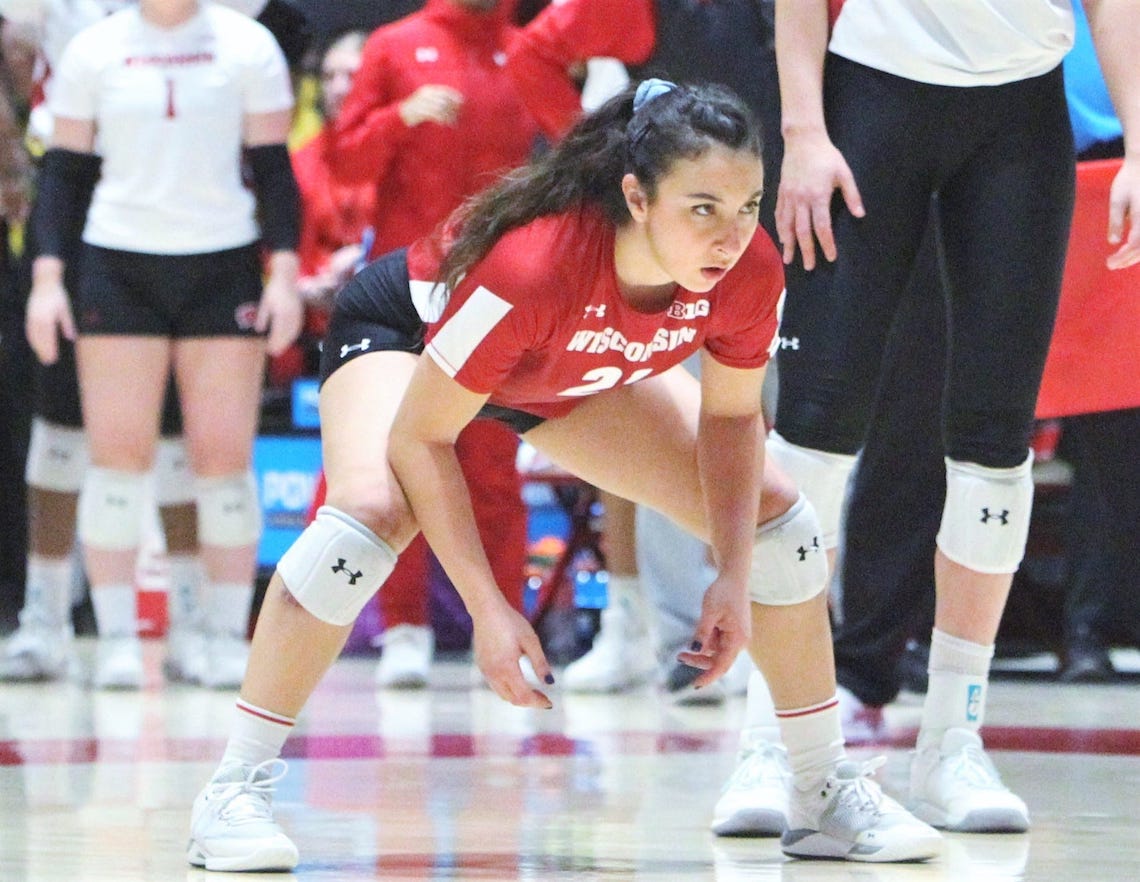
li*ber*o
What is the definition of libero in volleyball?
1. The libero is a type of defensive specialist who only plays in the back row, and a player who cannot block or attack the ball when it is above the height of the net. A coach may only designate one libero per set, and the libero must wear a contrasting jersey to differentiate the position.
What is the libero’s role?
The libero plays as a back row specialist in men’s and women’s volleyball. Because of this limitation, liberos will often be the best passers on the team to achieve the initial dig off of a serve or hit. Most often, the libero will replace the middle blockers on a team during their rotations to the back row.
What are the libero’s responsibilities?
Liberos are an important part of a team’s back row defense. Because they only rotate in for backcourt positions, they must be aware of the end-line and sideline locations to keep the ball in play or allow it to go out of bounds when hit too far over the net by the opposing team.
The best liberos have excellent ball control to help set up the offensive volleyball players in the front row for a potential scoring opportunity. They often step up to get the first pass in serve-receive situations and hits from the opposing team, which may involve difficult digs.
Is libero the hardest position?
The libero position is one of the most difficult positions for a volleyball player. As a defensive specialist, they have very mentally and physically demanding responsibilities in the back row. In addition, digging — a primary responsibility of the libero — is one of the hardest volleyball skills to master.
What are the benefits of being a libero?
There are a number of advantages to being a libero. Players in this position only have to focus on defense during a volleyball game, which helps them to hone specific skills. They are a vital part of a volleyball rotation, which means that they may get to play more than some of their other teammates.
Liberos often have leadership roles on their team, and they frequently communicate with teammates about the position of the ball, identify open spots on the other side of the net, and help keep a team’s energy up in between points.

Mark Stewart/USA TODAY Sports
What does the libero do?
The libero is a defensive specialist on a volleyball team who primarily digs and passes the ball. A libero plays in the back row and must be skilled in digging and passing. They help to set up the ball so the setter can set to hitters for a strong attack.
Can the libero spike?
The libero cannot attack the ball when it is above the height of the net. However, the libero can jump and hit, even in front of the 10-foot line (also known as the attack line), provided that the ball is lower than the top of the net.
Additionally, a libero cannot overhand set the ball in front of the attack line if any of their teammates will make contact with it above the net.
Can the libero serve?
In some situations and leagues, a libero is allowed serve. For instance, in the National Collegiate Athletic Association (NCAA), a libero can serve for a teammate once per full volleyball rotation, similar to other players.
The only instances in which this can occur are when the libero completes a double substitution. For instance, if Player 1 plays middle blocker and the libero replaces Player 1 for the back row, Player 1 would return to their position in the front row upon three rotations, and the libero would return to the bench.
However, if Player 2 plays middle blocker opposite Player 1 in the rotation, the libero may replace them without sitting out a set, meaning the libero would be next up to set.
The next time Player 2 reaches the front row, the libero must sit while Player 1 serves. After the serve, the libero may replace Player 1 once more.
This exception is not allowed in international play.
Why is the libero not allowed to serve?
While high school, college and club volleyball leagues allow liberos to serve, it’s not permitted by the International Volleyball Federation (FIVB). For example, men’s and women’s USA volleyball teams do not have a libero serving during their international games.
Liberos were actually prohibited from serving in NCAA volleyball as well until a rule change in 2004 that allowed them to serve in one rotation position. This means that they may only serve for one designated teammate, not for any of the teammates they sub in for. This rule change was later applied in high school volleyball.
Originally, liberos weren’t allowed to serve in an effort to limit their role strictly to defense. The goal was to create a more exciting and dynamic game by incorporating players with strong defensive skills rather than stacking a team with powerhouse hitters.
Today, most leagues have adjusted their rules to allow liberos some limited involvement in their team’s offense, such as serving. But in international play, liberos still have a role that is more strictly limited to defense.
Who can a volleyball libero replace?
The libero replaces one player on the court for their back row rotations, and that same player must re-enter the game for the libero before the libero reaches the front court.
When it comes to substituting, the libero can replace any back row player when the ball is not in play without notifying the official. In addition, when a libero substitutes for a player, it does not count against the total number of substitutions each team is allowed per set.
Typically, a libero is not included in the starting lineup. Instead, volleyball coaches typically sub in their libero for a starting player before the first serve. According to NCAA college volleyball rules, the player who is subbed out for the libero is the only one who can replace them on the court later in the volleyball rotation.
What is the libero’s jersey number?
The number on a libero’s jersey must be a legal number not worn by any of their teammates. A libero must wear a different color jersey than the rest of their team, but they do not have to wear a specific number on the court.
Why do liberos wear a different color jersey?
Liberos wear a jersey color that contrasts with the rest of their team to help officials track when they are entering and exiting the court. It’s important to make this distinction since subbing a libero in or out of the game does not count toward a team’s total number of allowed substitutions.
Why do teams use a libero?
Volleyball coaches aren’t required to use a libero, but most do for a few important reasons:
- Defensive skills: Liberos are typically more skilled at passing and digging compared to hitters, so it can help the team to substitute a libero once a hitter rotates to the back court. This allows both liberos and hitters to specialize in their strongest skills rather than struggling while in the front or back row, respectively.
- Roles for shorter players: Because the libero position is limited to the back row, it allows shorter players with excellent digging and passing skills to serve as a vital part of a volleyball team. Prior to the creation of the libero position, short players were more limited in how they could contribute to a team since the rotation required half their time to be spent in the front row.
- Unlimited substitutions: Substitutions are limited in volleyball games. Liberos don’t count against the team’s total, however, so they can sub in for middle blockers or outside hitters without taking away from other possible substitutions.
Are all liberos short?
Liberos are not necessarily short. A libero might be short in comparison to other teammates, especially given that the sport of volleyball favors players with height.
Because liberos function as defensive specialists, a lower center of gravity may help with moving quickly for fast digs. In addition, liberos are not permitted to complete an attack hit or block when it is above the top of the net, so being tall isn’t necessary to succeed in this position.

Matt Pendleton/USA TODAY Sports
When were volleyball liberos first introduced?
Liberos were first introduced in international play in 1998. The Sydney 2000 Olympic Games were the first Olympics in which the libero position was used. Liberos made their debut in the NCAA beginning in 2002.
Where does the word libero come from?
The word libero means “free” in Italian, which relates to this position in two ways:
- The libero replacements are free substitutions which do not count against the allotted number of substitutions each team has per set.
- The libero is not bound by traditional rotational rules. In essence, a libero maintains freedom to roam the back row.
What is a libero in soccer?
The libero is also a position in association football (soccer). Similar to volleyball, the libero position serves as a defensive specialist. The meaning of “free” in Italian also inspired the use of this term in soccer.
A libero, also known as a sweeper, serves as the last position in the defensive line. They play behind the rest of the defenders and in front of the goalkeeper. Their job is to “sweep up” any balls that get past the defensive line. Unlike other defenders, they aren’t assigned a specific mark on the opposing team. This leaves them “free” to move wherever they need to go, roaming the back line as needed to help defensively.
One critical difference between a volleyball libero and a soccer libero is that substitutions of a soccer libero do count against a team’s total substitutions. Therefore, they are not subbed in and out of the game frequently like volleyball liberos.
Examples of how libero is used in commentary
1. The libero makes an outstanding, diving dig on that strong spike from Timmons. The crowd erupts as the long volley continues between the USA and Brazil.
2. The championship game takes a dramatic turn as Hentz sprints past the end-line to collect an errant bump pass from her teammate. She reaches it just in time and gets it back over the net.
Sport the term is used
1. Volleyball